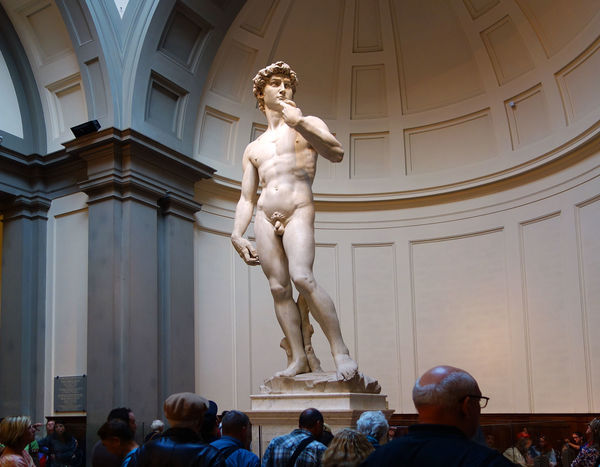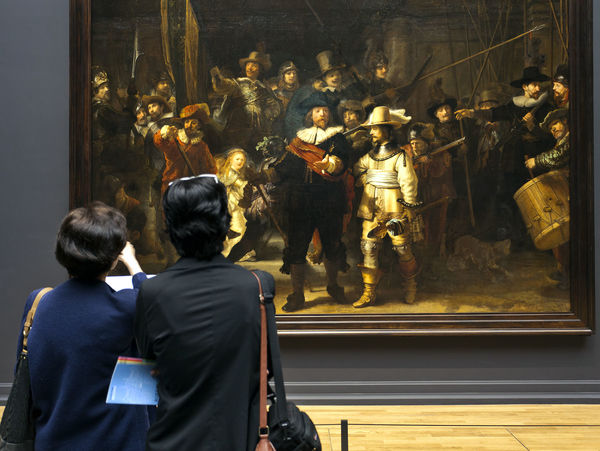Making Europe’s Art Treasures Come Alive
By Rick Steves

The Mona Lisa, the Colosseum, Chartres Cathedral, Michelangelo's David…Europe's cultural treasures are world-class, including some of the most beautiful and enduring objects humans have created.
But let's face it. Too many museums can ruin a perfectly good vacation. For some, Chartres' acres of stained glass can be a yawning bore, and the Vatican Museums on a busy day can make anyone a Roman ruin.
The truth is that Europe's great sights can evoke gasps or yawns — it all depends on what you know about them. You can look into the eyes of Michelangelo's David and see a supersized hunk of marble — or you can witness humanity stepping out of medieval darkness into the Renaissance. The difference? Knowledge.
When people, admitting their ignorance of art, say, "But I know what I like," they usually mean, "I like what I know." It's easier to like something that's familiar and understood. If you like what you know, you can usually increase your liking by simply increasing your knowing. That's true of most things, from appreciating good wine to admiring the classic lines of a '56 Chevy. Learn about it first.
You don't need a Ph.D. — a little background knowledge goes a long way. I remember touring the National Archaeological Museum in Athens when I was younger because my mom said it would be a crime not to. I was bored out of my mind. But two years later, after taking a class in ancient history, that same museum was a fascinating trip into the world of Pericles and Socrates.
But don't lose heart if you slept through your art and history classes. European museums, which used to be stingy with helpful information (and almost none of it in English), have figured out that they have an international clientele. The best museums do a lot of the background study for you, with extended labels, good audioguides, and fun apps for your smartphone.
It's worth the trouble to better understand long-gone people — especially when you've traveled so far to see the objects they found beautiful. Those artifacts and artworks may seem dusty and old, but they're springboards into living, breathing history.
On a recent visit to the great cathedral of Siena — hardly my first — my head was nevertheless spinning from taking in the church's overall magnificence. It's not surprising that I hadn't noticed a wooden post strapped to the side of a towering marble column.
But when I asked my guide Roberto to point out the most significant piece in the cathedral, he went right to that wood flag pole — it had a story to tell. The Sienese captured it from the Florentines in a crushing battle fought on September 4, 1260 — a battle so bloody and treacherous that Dante recorded it in the Inferno. The Sienese proudly remember the rivalry and bloodshed of this date as if it were yesterday — and now so do I, having had it made real by a simple piece of wood.
If you dig a little deeper, you'll find that European museums are filled with artworks that have the sharp immediacy of eyewitness accounts. In Germany, Reformation-era paintings pump up the charisma of Martin Luther as he challenged teachings of the medieval church. In Scandinavia, vivid slice-of-life scenes show off the epic nature of the land and the psyche of a pragmatic people. In France, a newly minted middle class enticed the Impressionists to follow them out on picnic outings or into cabaret halls.
I've also been lucky enough to recently revisit the inspirational (and beautifully renovated) Rijksmuseum. Its galleries are a primer of the Dutch Golden Age of the 1600s — and full of visitors learning to appreciate a culture and time just by paying close attention to great pieces of art.
Lush portraits of brilliantly wealthy Dutch traders boast of their status and success, with their ships roaming the globe and their leading city the pinnacle of European civilization. Intimate scenes of daily life — a woman reading a letter, skaters gliding on a frozen river, a maid pouring milk — show the prosperous Dutch at work and play.
The climax, Rembrandt's Night Watch, is a bigger-than-life-size group portrait of a militia company. These able-bodied men, bursting with energy and power, were meant to defend the city. But with peace all around, they were more of a social club — a kind of Rotary Club of the 17th century. Standing face-to-face with these proud Amsterdam bigwigs makes it easy to imagine their reality.
Not every person will like every "masterpiece" ever made. But when you understand an artwork's intention, you can appreciate the result. Art naturally becomes more interesting when you can relate it to real people. Keep on traveling — and learning.

